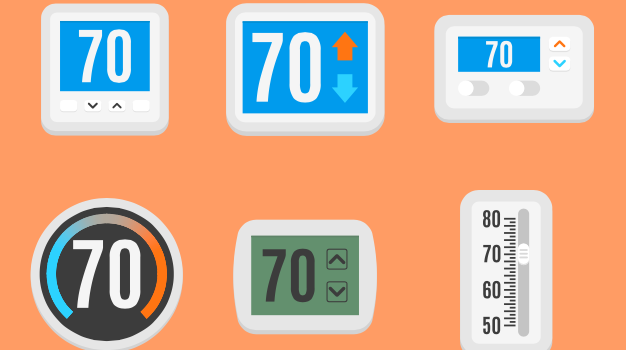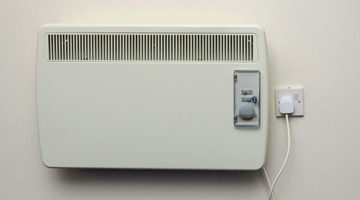
Heating controls have been around for a long time, and until recently there hadn’t been many developments. This has all changed with the introduction of ‘smart’ heating controls. These are highly personalisable and user-friendly systems that give you better control over the temperature of your home, and potentially save you money too.
Smart heating system components
Smart heating systems vary a lot between brands, and some are highly customisable. You can opt for a very simple system or have the option of adding lots of different components. You can pick and choose to suit your needs and budget, but nearly all smart heating systems have at least these 3 key elements:
-
CENTRAL UNIT/SMART THERMOSTAT
Every smart heating system has a central unit at its core. This replaces a traditional thermostat, with some important additional features. Like with an old-fashioned programmer, you can set heating schedules to suit your lifestyle. The difference with a smart system is that you can set more of them, to fine-tune your heating. They’re easy to use and a lot of the process is automated.
You set up your smart heating system to work around your lifestyle for maximum efficiency. For instance, if you’re out at work on weekdays, you could set it up to come on just before you wake up and turn off when you go out, then turn on again for a bit in the evening. You can set a different schedule for the weekends, when you might be in more. And you can easily change your requirements when the weather warms up.
Some heating systems are even simpler; they just ask you a few questions and set a schedule automatically. Others learn from your habits for better control.

Some smart thermostats have geo-fencing too – this tracks the location of those in your household via their mobile phones and turns the heating on automatically when they’re nearing home. This means if they arrive home unexpectedly between the programmed hours, your central unit will override the schedule and switch the heating on then.
Smart heating also makes it much easier to measure and control the temperature in your home. Because it helps you heat your home evenly throughout, you can probably set the thermostat lower, saving you money. In fact, turning your thermostat down by just one degree can save as much as £100 over the year.
-
TRVS/ADDITIONAL THERMOSTATS
Smart thermostatic radiator valves (TRVs) are attached to your radiators and allow you to control each of them individually. This means you can more accurately measure the temperature of separate rooms, rather than just by one central thermostat, which could be in a completely different section of the house!

‘Zoning’ your home, by installing thermostats/TRVs in each, means you can just heat rooms you’re actually going to be in, which is another way you can save money. Why pay to heat a room all day if you’re not going to be in it?
-
SOFTWARE
Most smart heating systems include a smartphone/desktop app that allows you to control your heating from outside of the home, and also to map your usage. Being able to turn your heating on or off or change schedules from wherever you are is possibly the most key difference with a smart heating system.
There are several scenarios in which this control comes in handy. If you know you’re going to be getting home from work later than usual, you can change your schedule for that night. If you go away and forget to turn the heating off, you can do it with the touch of a finger! Or if you go away and the temperature dips, you can put your heating on low to prevent your pipes freezing.
The other element of this software is that it allows you to easily track how much heating you have been using, and how this compares to previous days/weeks/months. You can see how small changes affect your bills, and if you’re more in-tune with costs, it might encourage you to change your habits. Without this, it’s easy to just switch the heating on whenever and not think about it until you get a hefty bill through at the end of the month.
The cheapest smart heating systems start at just over £100, with most costing between £2-300. The exact cost will depend on which elements you combine, plus installation costs in your area. Generally speaking, it’s a measure that will definitely pay for itself in the long run in savings to your energy bills.
| Claimed Typical Energy Savings after Installation of Smart Controls | |
| Tado | 14 to 26% savings |
| Nest | 10 to 12% savings |
| Hive | Up to £150 a year |
| Netatmo | 37% Savings |
| Honeywell | 40% Savings |
| Table compiled from claimed performance by the manufacturer. We would be sceptical of these figures because they are probably based on ideal conditions of use, rather than real world examples. | |
Yes, smart heating systems save you money!
The answer is easy – for all the reasons above, smart heating systems can save you a lot of money with very little effort on your part. The combination of a smart thermostat, TRVs and remote control means you have loads more control over your heating, and therefore over your spending. And your home will be more comfortable too!
Think we missed something? Do you have a different opinion?
Comment below to get your voice heard…













One Comment